
Ship Arour - On Sea 21 st Febuary 1882

One day in October, while Paul was walking down Broadway Street
in New York, a gentleman tapped him on the shoulder. “You are Captain Boyton, I believe?”
“I have just returned from Europe, I have been looking for you. I have a message for you, from Don Nicholas de Pierola, I am an agent of the Peruvian government, it is not safe to talk here, there are Chillian spies in New York as well as in Lima.
Meet me tonight at this address,” Slipping a card in Paul's hand, the
man hurriedly walked away.
That night Paul went to the house on thirty-fourth street where he met the stranger, who immediately got down to business, stating that Don Nicholas de Pierola, wanted Boyton to leave for Peru at once, with his equipment and rubber suit, plus the torpedo cases, electrical appliances and everything necessary for the destruction of Chillian vessels of war.
It did not take Paul long to get all the necessary equipment needed and arrange the preliminaries. Before leaving a contract was drawn up, stating he was to enter the Peruvian torpedo service, with a commission of Captain. He was to receive one-hundred-thousand dollars for the first Chillian vessel destroyed and one-hundred-and-twenty-five-thousand dollars for the second, one-hundred-and-fifty-thousand dollars for the third. Three vessels that were priority on the list, were the Huascar, Bianco Encalado and the Almirante Corcoran.
Next day as Paul was happily getting ready for this new adventure with the chance of making some good money out of it.
He was to go to Peru as Pablo Delaport a newspaper correspondent, receiving his passport and papers the following day. Telling his family that he was just going to take a short trip to Panama. Not wanting to upset or worry his beloved mother with the details of the dangerous task he was undertaking in Peru.
On October the tenth 1882, accompanied by his assistant, George Kiefer, he embarked on the steamer Crescent City for Aspinwall, arriving there on the nineteenth, from there they crossed to Panama and had to waite for two days for the Columbia to take them south.
A Chilian man-o-war, the Amazons, was anchored at Panama on lookout for a torpedo launch that was expected from New York. In his capacity as newspaper correspondent, Paul went on board the man-o-war to inspect her, with the idea that he might have an opportunity sometime to attach a one-hundred-and-fifty pound torpedo to her bottom . He was escorted through the vessel by the Captain and took copious notes of her construction and armament. As he was going-over the side into the boat to return to shore, an English engineer looked at him very carefully and remarked, “Your face seems familiar to me. Where have I seen you before?”
Paul replied that he could not possibly tell as his duties lead him to all parts of the world, and hurriedly entered the boat. The next day they set sail and soon saw Dead Man’s Island at the mouth of Guayquil river. While on this second leg of his trip he was able to get another letter written to Elise.
From some points the island bares a startling resemblance to a gigantic man afloat on his back, hence its name, they steamed up the river about sixty miles to Guayquil. The chattering of parrots and paroquettes along the shore was almost deafening as flocks would hover over the vessel for several minutes at a time and then fly back to the forest. Guayquil is one of the hottest towns on earth, though not one of the cleanest. The stench arising from the filthy streets is overpowering and, and fever flags fly from nearly every third or fourth house.
The steamer lay in the middle of the river to discharge her cargo into lighters, passengers took advantage of the waite, taking a trip across to the city.
Once unloaded, now the twenty sixth of October, the vessel went on it’s way to Paita, the first Peruvian port, Paul took a long walk on the beach and for the first time saw the curious blood red crabs that are in myriads along the shore, from a distance they look like big red waves, but as you approach they disappear in to holes in the sand, their behavior is simular to that of the hermit crab they are small, not edible, as quick as rats and as difficult to catch, there are countless thousands of them along the beach.
Chimbote was the main port in Peru, the steamer only anchored, long enough to take on mail as the port was then in the hands of the Chillians, they headed for Callao. Callao was also now in the hands of the Chillian Fleet who had blockaded the port, steamers were not permitted to land there. Just off the city the Columbiathey steamed through the blockaders, much to Paul’s concern, a little man on board had been asking Paul a lot of questions, especially what his interest was in Peru. Trying as often as possible to avoid the man, as he was behaving suspiciously and could be a spy, fearing that he may be sending signal’s to one of the blockading vessels, Paul was forced to keep up a running conversation with him.
From Chapter 11 of the book.."Roughing It In Rubber."


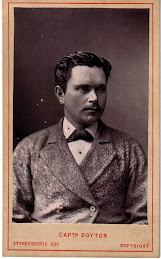

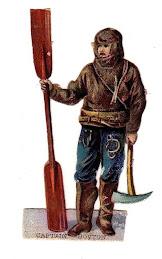

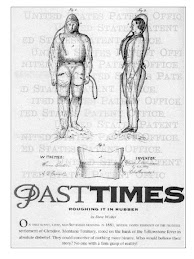
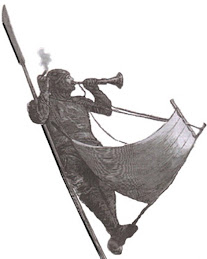

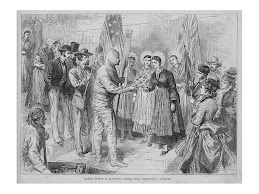

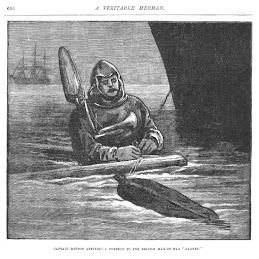
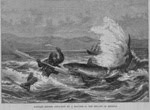
No comments:
Post a Comment